Psalm 56:1 Be merciful to me, O God, for men hotly pursue me; all day long they press their attack. 2 My slanderers pursue me all day long; many are attacking me in their pride. 3 When I am afraid, I will trust in you. 4 In God, whose word I praise, in God I trust; I will not be afraid. What can mortal man do to me? 5 All day long they twist my words; they are always plotting to harm me. 6 They conspire, they lurk, they watch my steps, eager to take my life. 7 On no account let them escape; in your anger, O God, bring down the nations. 8 Record my lament; list my tears on your scroll–are they not in your record? 9 Then my enemies will turn back when I call for help. By this I will know that God is for me. 10 In God, whose word I praise, in the LORD, whose word I praise– 11 in God I trust; I will not be afraid. What can man do to me? 12 I am under vows to you, O God; I will present my thank offerings to you. 13 For you have delivered me from death and my feet from stumbling, that I may walk before God in the light of life.
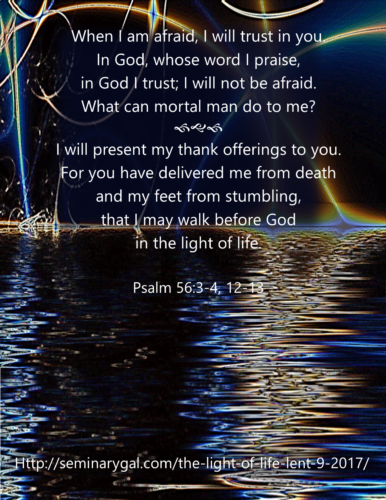 In the Bible, the “light of life” is a phrase meaning the fullness of life. Life on full display. On the big screen, not just the hand-held device.
In the Bible, the “light of life” is a phrase meaning the fullness of life. Life on full display. On the big screen, not just the hand-held device.
How do we have that fullness of life, that “light of life”?
You may have heard the phrase “Seeing is believing” but in the case of God and us, “Believing is seeing.” We know Him by more than just sight. We know Him by His act of Creation that we can see and continue to know Him by trusting in His Word. That’s how we’ll have fullness of life, the light of life.
In today’s psalm, David is being pursued by people he can see and hear. He knows what they’re plotting. He turns instead to the One he cannot see or audibly hear except by faith. Look over the psalm and note how sight and sound dominate man’s approach.
How easy it would be to rely only upon what he can see and hear!
But look at the response of David: praise, trust, confidence in the fullness of life. Trusting in God’s Word, David had spiritual sight to overcome opposition that was both audible and visible. Sometimes we just have to stick with what we know, and by faith, see.
Fun fact of light: According to the National Severe Storms Laboratory (NSSL), it is “not possible to have thunder without lightning. Thunder is a direct result of lightning. However, it IS possible that you might see lightning and not hear the thunder because it was too far away. Sometimes this is called “heat lightning” because it occurs most often in the summer.”
Thunder is produced when lightning–a giant flash of electricity from charges in the atmosphere– break from the natural insulation of clouds, air, etc. The result is a rapid discharge of electricity which equalizes the charges in the atmosphere. What makes the sound?
According to NSSL, “Thunder is caused by lightning. The bright light of the lightning flash … represents a great deal of energy. This energy heats the air in the channel to above 50,000 degrees F in only a few millionths of a second! The air that is now heated to such a high temperature had no time to expand, so it is now at a very high pressure. The high pressure air then expands outward into the surrounding air compressing it and causing a disturbance that propagates in all directions away from the stroke. The disturbance is a shock wave for the first 10 yards, after which it becomes an ordinary sound wave, or thunder.”
We see the lightning before hearing the thunder because light waves travel faster than sound waves. Yet, we can see “heat lightning” without hearing thunder and sometimes, depending on where we are, we can hear rumbles of thunder but not see the lightning. Yet we know it’s there. Believing is seeing in the light of life.
For further study:
- Read John 20:29 Then Jesus told him, “Because you have seen me, you have believed; blessed are those who have not seen and yet have believed.”
- In this story about Thomas, one of Jesus’ disciples, physical light led to physical vision. But how does spiritual light lead to spiritual vision?
- Which one, physical light or spiritual light, leads to the fullness, the light of life?
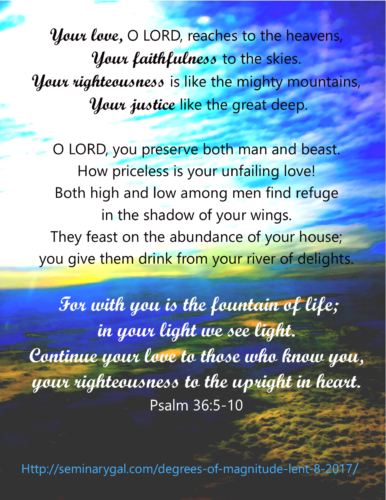
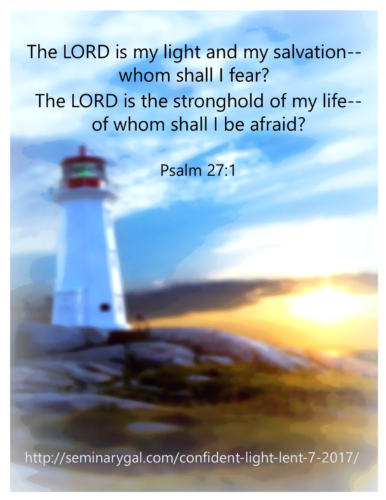 The connection between light and sight is undeniable. If darkness and blindness lead us to feelings of uncertainty and even fear, it shouldn’t surprise us that both light and sight can lead us to confidence.
The connection between light and sight is undeniable. If darkness and blindness lead us to feelings of uncertainty and even fear, it shouldn’t surprise us that both light and sight can lead us to confidence. 
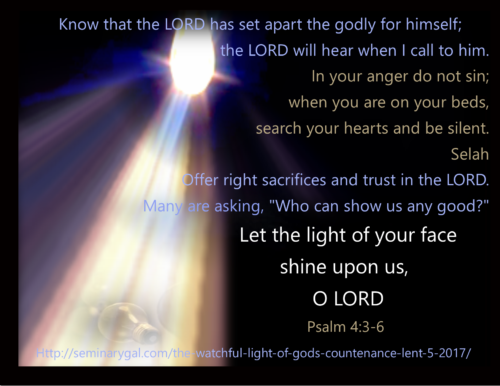
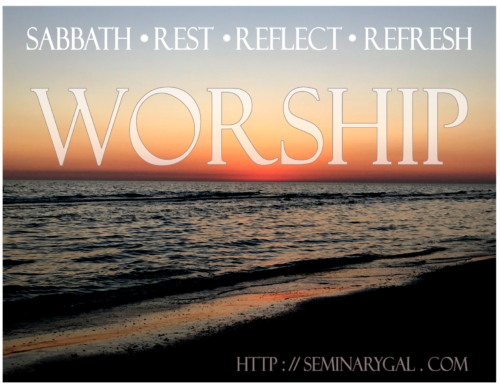
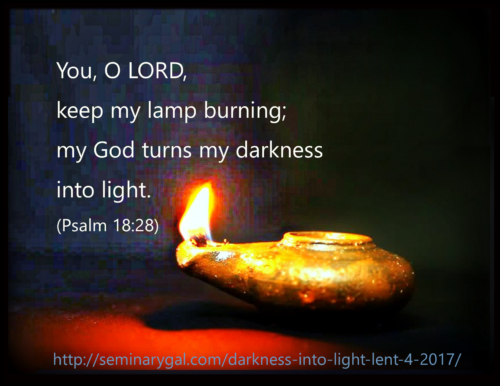
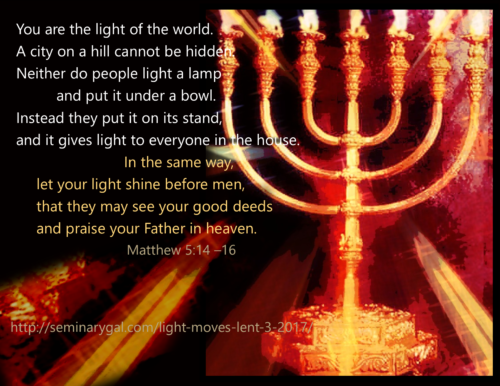
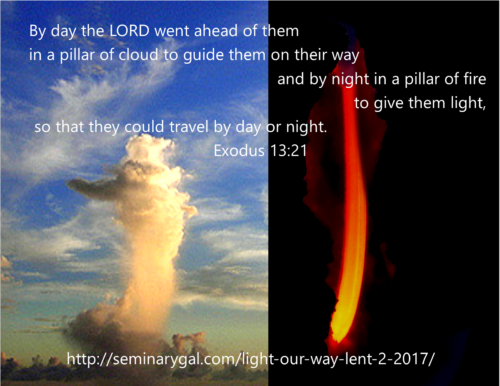
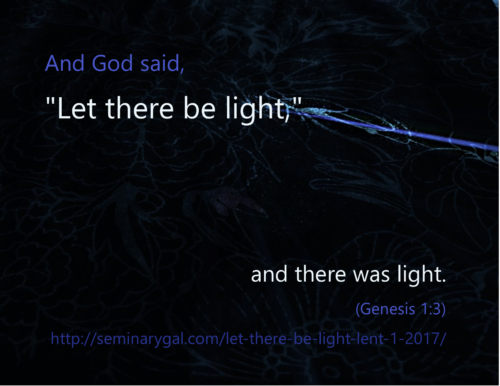 t wasn’t because He couldn’t see in the dark, like Dad needing to turn on the shop light to work in the basement. It wasn’t because light was needed for everything else to happen in a chain reaction: lights, camera, action! It wasn’t for His benefit or as materials-and-methods for God or for us to repeat His science experiment. And it wasn’t so we’d argue about old earth, young earth, Big Bang, Creationism, Darwinism, or any other host of things Christians can find to argue about. It wasn’t even to give scientists something to prove. Such things evidence a misunderstanding of God, of Genesis, and of God’s act of Creation.
t wasn’t because He couldn’t see in the dark, like Dad needing to turn on the shop light to work in the basement. It wasn’t because light was needed for everything else to happen in a chain reaction: lights, camera, action! It wasn’t for His benefit or as materials-and-methods for God or for us to repeat His science experiment. And it wasn’t so we’d argue about old earth, young earth, Big Bang, Creationism, Darwinism, or any other host of things Christians can find to argue about. It wasn’t even to give scientists something to prove. Such things evidence a misunderstanding of God, of Genesis, and of God’s act of Creation.